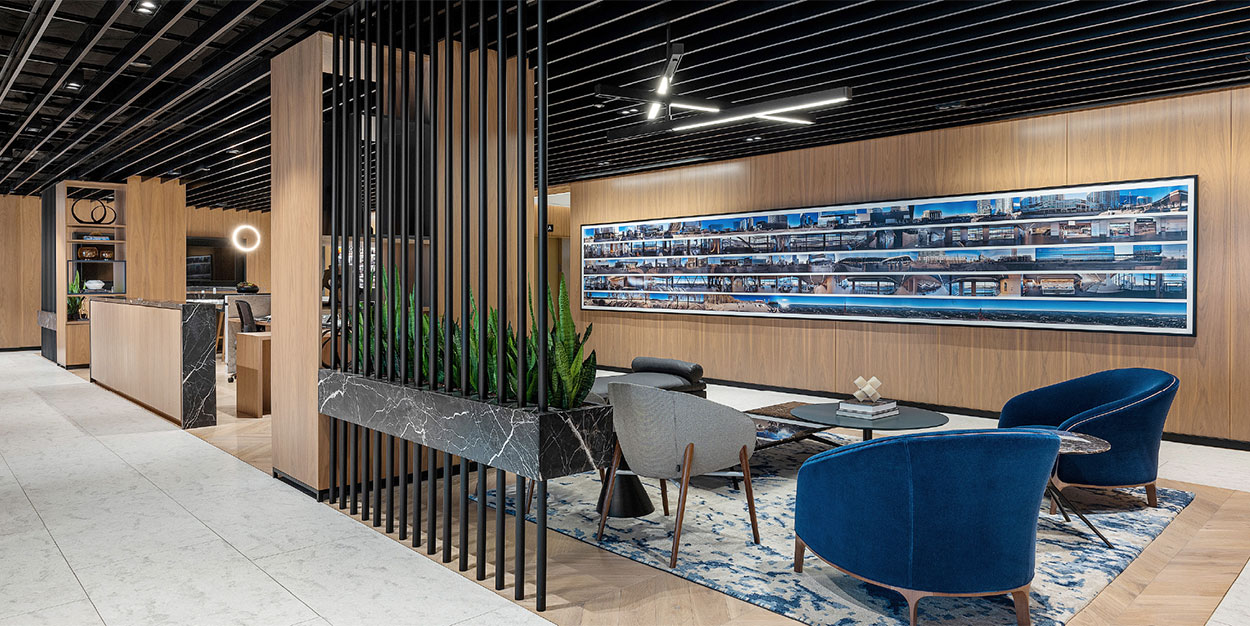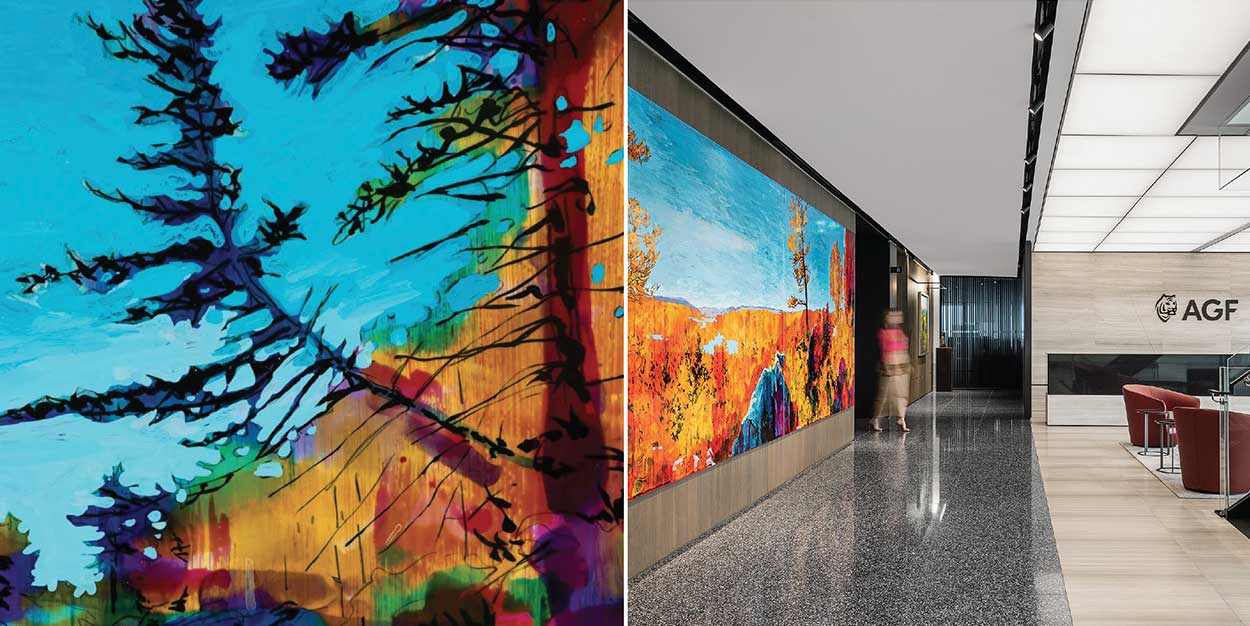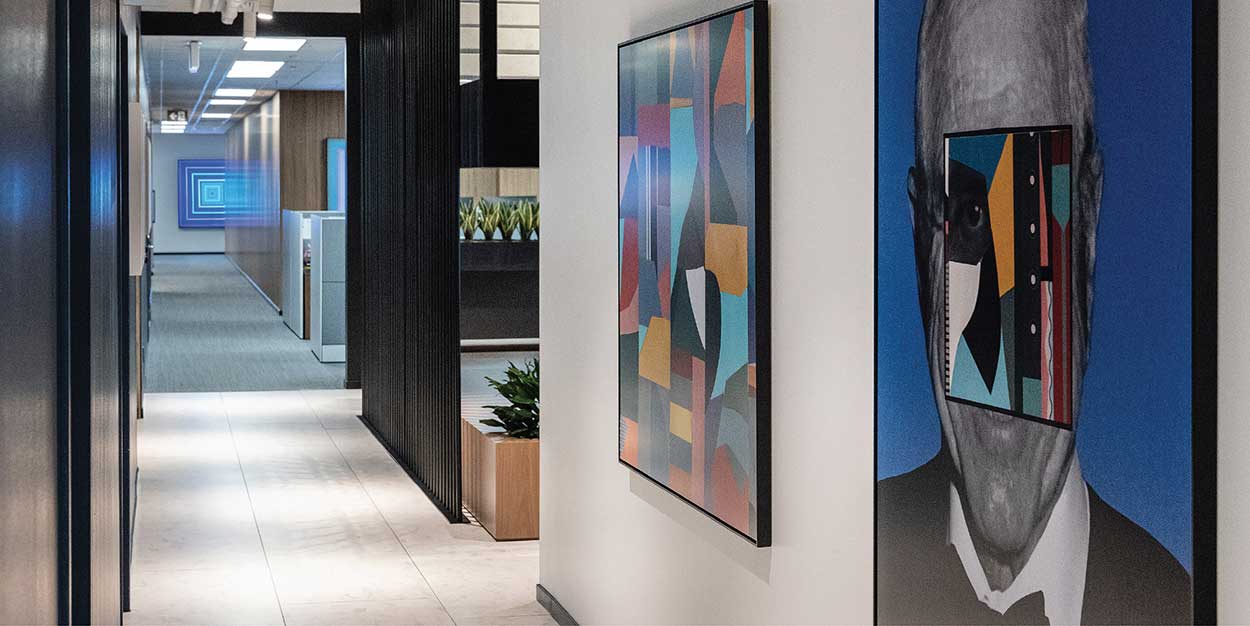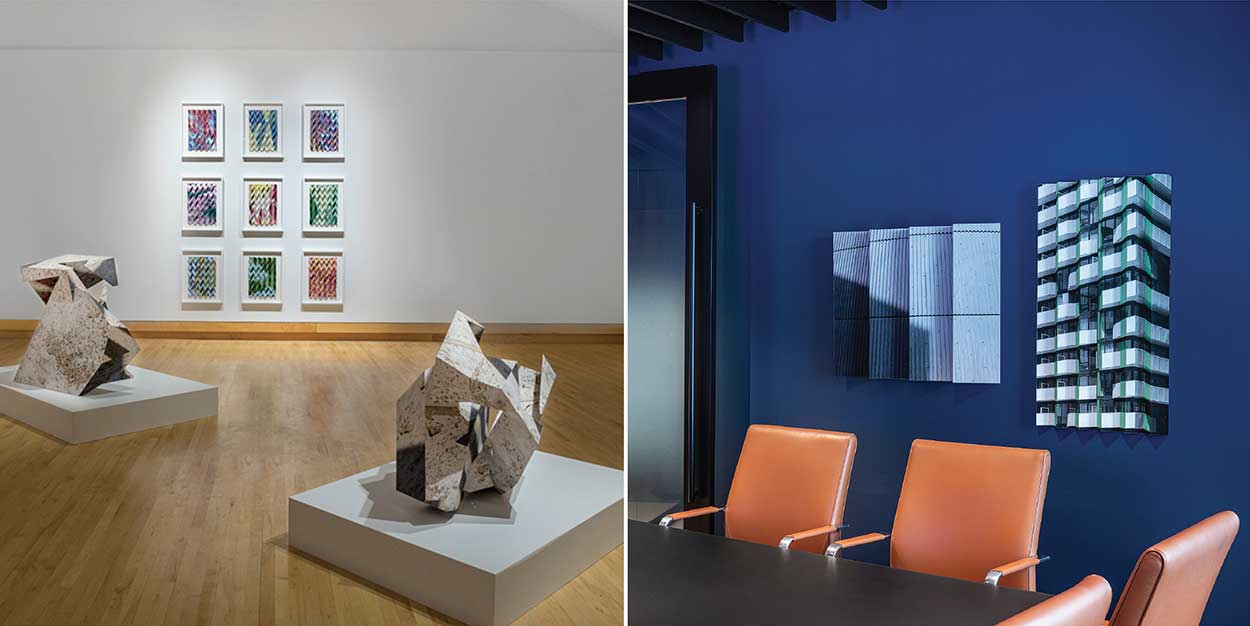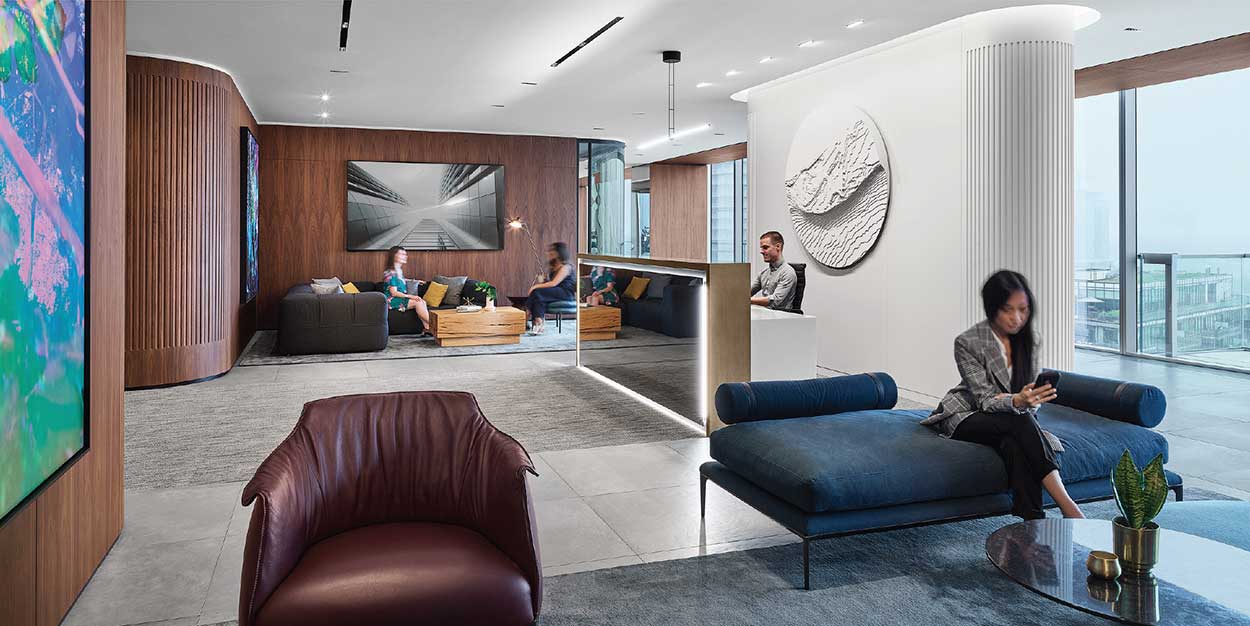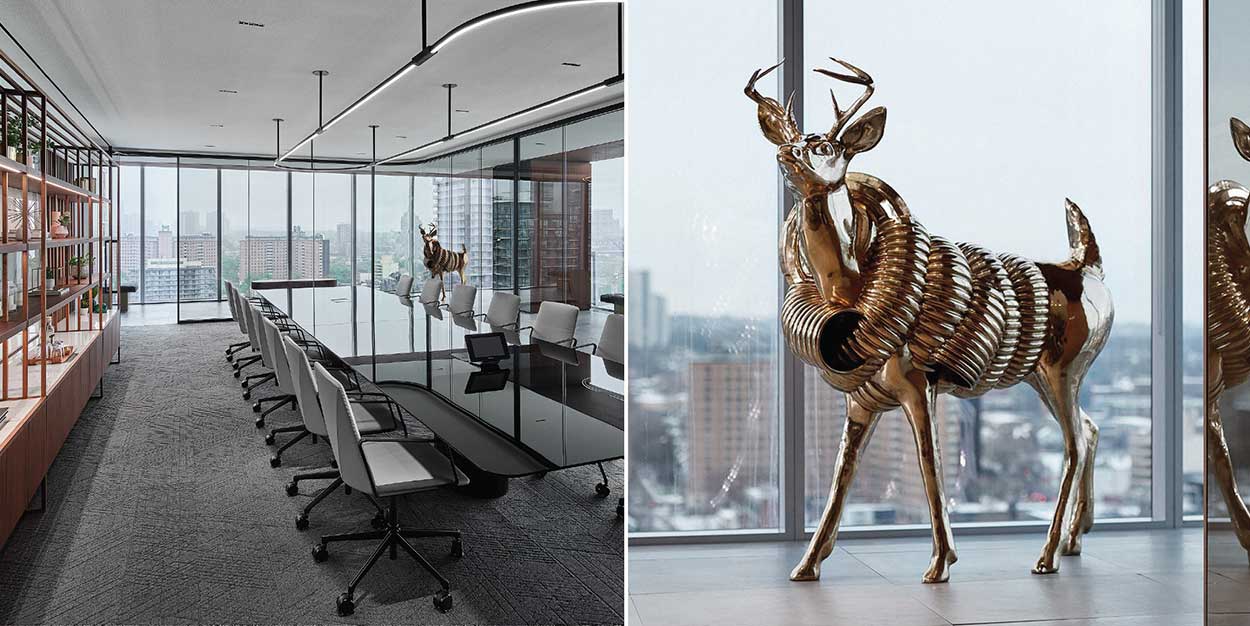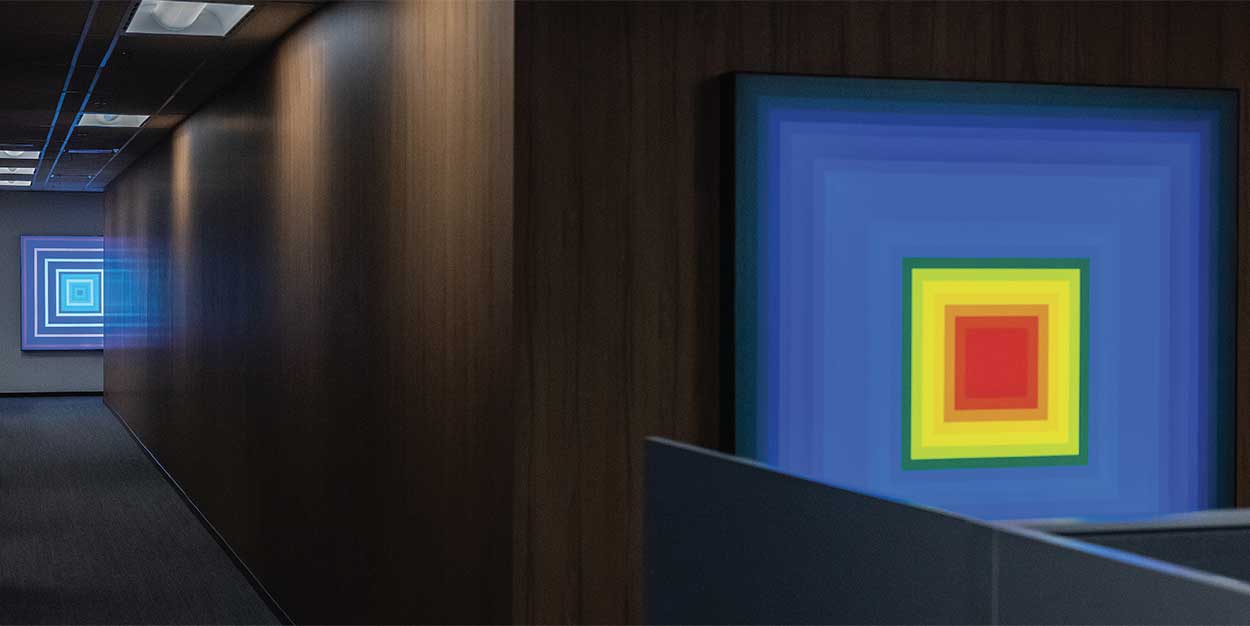WORK OF ART
Art is powerful. It has the capacity to inform, inspire, influence, motivate, and stimulate. It can evoke a
range of emotional responses, create a feeling of community and connection, and has the potential to
forever alter our lived experiences. When art is the center of attention and attraction, at a gallery or
exhibit, we expect to be impacted, and for the effects to resonate with us long after we have left the
room. However, it is when this impactfulness occurs in unexpected spaces that truly underlines the
significance and importance of art. “Art changes our perception of space. It changes how we understand
and interact within it,” notes Eric Yorath, Principal at Figure3. “Working alongside talented consultants,
Figure3 considers how art can encourage and facilitate different ways of thinking, while shaping the
environment around it.”
As a fundamental pillar of cohesive design, the integration of art in the workplace can be used as a tool
to reflect a company’s ethos, values, and culture; while simultaneously eliciting a multitude of feelings,
including that of focus, enthusiasm, or excitement. Working alongside artists, designers, and clients alike,
Emily McInnes’ goal as an Art Curator is to select pieces that will achieve a cohesive brand story, while
complementing the form and function of the physical space.
Harnessing the power of art is a creative process fuelled equally by design expertise, industry knowledge,
and a little bit of intuitive magic. While workplace designs often favour function over the fanciful, McInnes
sources or commissions artwork that satisfies the requests of both the client, and the office design itself.
By exploring the context of where the artwork will eventually live, McInnis is given clues to piece together
the perfect artist, medium, and final product that will complete and elevate a workspace.
To further cement a company’s core values, the visual representation of brand identity through art can be
applied, while simultaneously igniting spaces with a sense of whimsy. For example, the architecture, design,
and artwork that fill the Figure3 designed 25,000 square feet of space for the Great Gulf & First Gulf
headquarters at the Globe & Mail Centre convey urbanity, creativity, sustainability, and community. “We needed
to tell the story of how they respect nature through sustainability, innovation and construction,” explains
Suzanne Wilkinson, Principal at Figure3. In addition to the artwork created from geological data capturing the
Toronto Harbour by artist Joy Charbonneau, the most notable piece is a sculpture by Robert Cram. Situated
at the end of the boardroom gallery stands a deer cast in brass with mechanical air duct coils wrapped
around its body. This piece purposefully prompts an emotional response, and serves as a conversation
starter reflecting the responsibility of human interaction within nature.
“Art is a language and it has
an ability to connect everyone
on an emotional level”
/ Emily McInnes, Art Curator
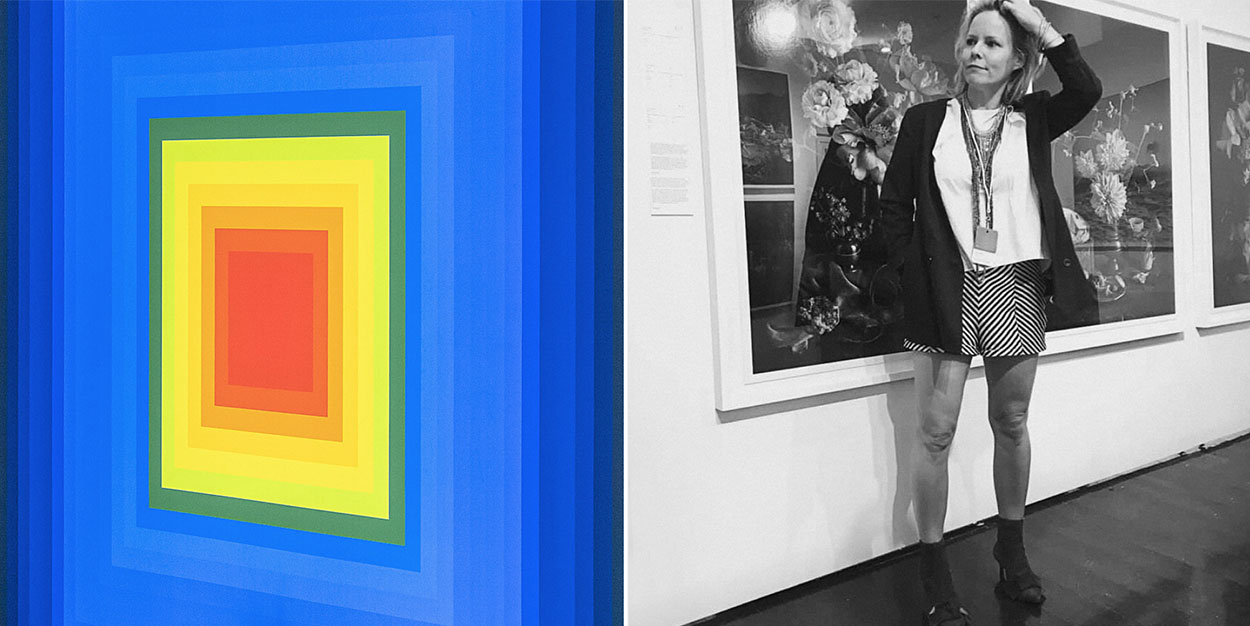
“When incorporated harmoniously into a space, art is the soul of the interior design. It is the story
to be told, and the feelings within the shell.” – Suzanne Wilkinson, Principal at Figure3
Besides bolstering brand identity and subconsciously communicating core values, art can be grounded
in historical, architectural, and cultural influences. In consulting with the Menkes team for their newly
renovated and Figure3 designed Toronto Headquarters, the narrative for the artwork was built around
the directive of Toronto itself. “The Menkes family cares about culture and art, and it shows,” shares
McInnes. For what would be a large selection of pieces, the intention was to curate a collection which
would reflect the style of many contemporary, emerging artists, while breathing energy and emotion
into the office. McInnis sourced and commissioned pieces with infusions of colour, so the spaces would
feel uplifted, vibrant, and would feel good overall to connect with and work beside.
Mcinnis considers the artists themselves when pairing pieces with spaces–who they are, where their
inspirations come from, and how that aligns with the work the client is doing. Much like the Menkes
family, emerging artist Jessica Thalmann is deeply inspired by the architecture found in Toronto’s urban
core. As a photographer and sculptor, she carries an innate sensibility for texture, form, and light.
In the site-specific commission for the Menkes art collection, Thalmann captured the white fluid
wave-like balconies designed by Peter Clewes, by imprinting archival pigment prints on folded steel.
Approaching from one angle the piece appears black and white, but as you pass and turn around
you are greeted with a burst of full colour. Similar to how light would be reflected on the actual building
during the changing light through the day, this unique construction encourages interaction, as altering
your physical perspective to the piece in turn alters your visual experience as well. The connections
with building, references to architecture, and the vibrancy all connect back to who Menkes is, and how
they want employees, clients, and guests to feel when navigating their office space.
“Art is 100 per cent reflective of a company’s culture and their attitude towards the people who’ve
chosen to work with them. It’s a really careful process, like hiring. So when you find that person that’s
a good fit, you want to nurture that.” Emily McInnes, Art Curator.
People are passionate and care deeply about the work they do, so when a company chooses to
enhance their space by investing in art, it feels like a show of appreciation, receiving that energy from
staff and distributing it back into the physical space for all to enjoy. For the installation of art in the new
AGF Headquarters, it was important to represent the physical and sentimental transition of moving the
company into a new space; morphing the traditional with the new through innovation. It became clear
to McInnis early on that the best way to represent this passing of the baton would be to commission a
singular artist to create a custom piece, nodding to the past with reverence while looking forward to the
future. The result: an impactful, 30 foot by nine foot landscape-inspired painting by Steve Driscoll, which
sits opposite the impressive view from the office. The physical proximity of this piece makes a call to art
imitating life, generating a feeling of a seamless and all-encompassing art moment. “To be able to
experience, essentially, a mini museum of curated pieces in the workplace can feel very special,”
reflects McInnis. “I’d love to see more companies appreciating how impactful it is to dedicate
thinking towards putting a curated collection into their space.”
